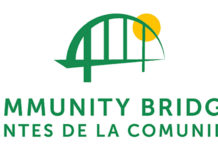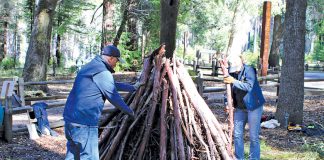My home is encircled by fairy rings. But before you envision my dog, Bucky, and me hiding out at night to see if the wee little ones will appear, let me explain that these are rings of redwoods.
After a tree is logged, it may send up sprouts from its ancient root systems that form a circle around the stump. As these second-growth trees mature, they create a “fairy ring” around the fallen redwood. As my trees have not been logged for 100 years, their size is impressive, and they are cinnamon-colored rather than the gray-brown of younger redwoods.
Only 3 to 5 percent of the original 2.4 million acres of old-growth coastal redwoods remain, most protected in dedicated parks. I live outside Big Basin Redwoods State Park, the oldest and largest state park in California. The park was saved from logging by a small group of people who believed that these trees “were among the natural wonders of the world and should be saved for posterity” (Andrew P. Hill, photographer-turned-environmentalist, 1899).
They passed the hat, collected $32, and started a campaign to save the redwoods. In two years, they succeeded with the creation of Big Basin. Calling themselves the Sempervirens Club, they created a legacy of protecting our trees, a legacy that lives today as the Sempervirens Fund.
When I pick up guests at the airport, I include a little treasure in my purse. Once they’re settled in the car, I pull out a redwood cone, which is the size of an olive pit.
“Can you believe that this little thing is the beginning of redwood tree?” I ask.
They put it in their palm with the same awestruck expression I have seen from tourists from all over the world.
Recently, a friend visited me from Dallas. She was turning 70 and wanted to celebrate her birthday by hugging a redwood for the first time.
As we wandered through an old-growth grove, I pointed out lichen, gauzy and green, hanging from a tree. Lichen is a mutually supportive combination of algae and fungus. As we said when I was a docent at Henry Cowell Redwoods State Park, “Algae and fungus met and took ‘a lichen’ to each other.”
Lichen is an indicator of good air quality, and that’s why you see it in Santa Cruz County. We get an “A” from the American Lung Association, while most counties in California get an “F.”
Then I told her that in some cases, you can put a stethoscope up to a tree and hear its life flow, the movements of fluids within it, and realize that it’s a living creature. (Unfortunately, you cannot do this with a redwood.) To do it, in spring you need to find a deciduous tree that’s about 6 inches in diameter with thin bark. But it made for a good story, and she sent me a stethoscope when she got home.
At my home in the forest, I can see the bats at twilight bouncing about in the trees like drunken boomerangs. As night arrives, the redwoods block my view of the moon — but which would I rather see, a cold rock or a living tree?
If you enjoy uncovering stories about our redwood forest, join Steve Singer, redwood ecologist, and me for a journey up Bear Mountain on Aug. 29. From the forest floor to the magnificent canopies, he will answer your questions, such as: Can a redwood die? What’s a Marbled Murrelet? And how are a bald man and an old redwood alike?
This walk is sponsored by the Valley Women’s Club with a grant from the San Lorenzo Valley Water District. For more information on this free event, please e-mail me.
• Carol Carson has been a docent for Henry Cowell Redwoods State Park and has taught courses on Big Basin State Park for University of California, Santa Cruz Extension. She is an environmental educator and a member of the Valley Women’s Club and can be contacted at ca****@*********on.com.










